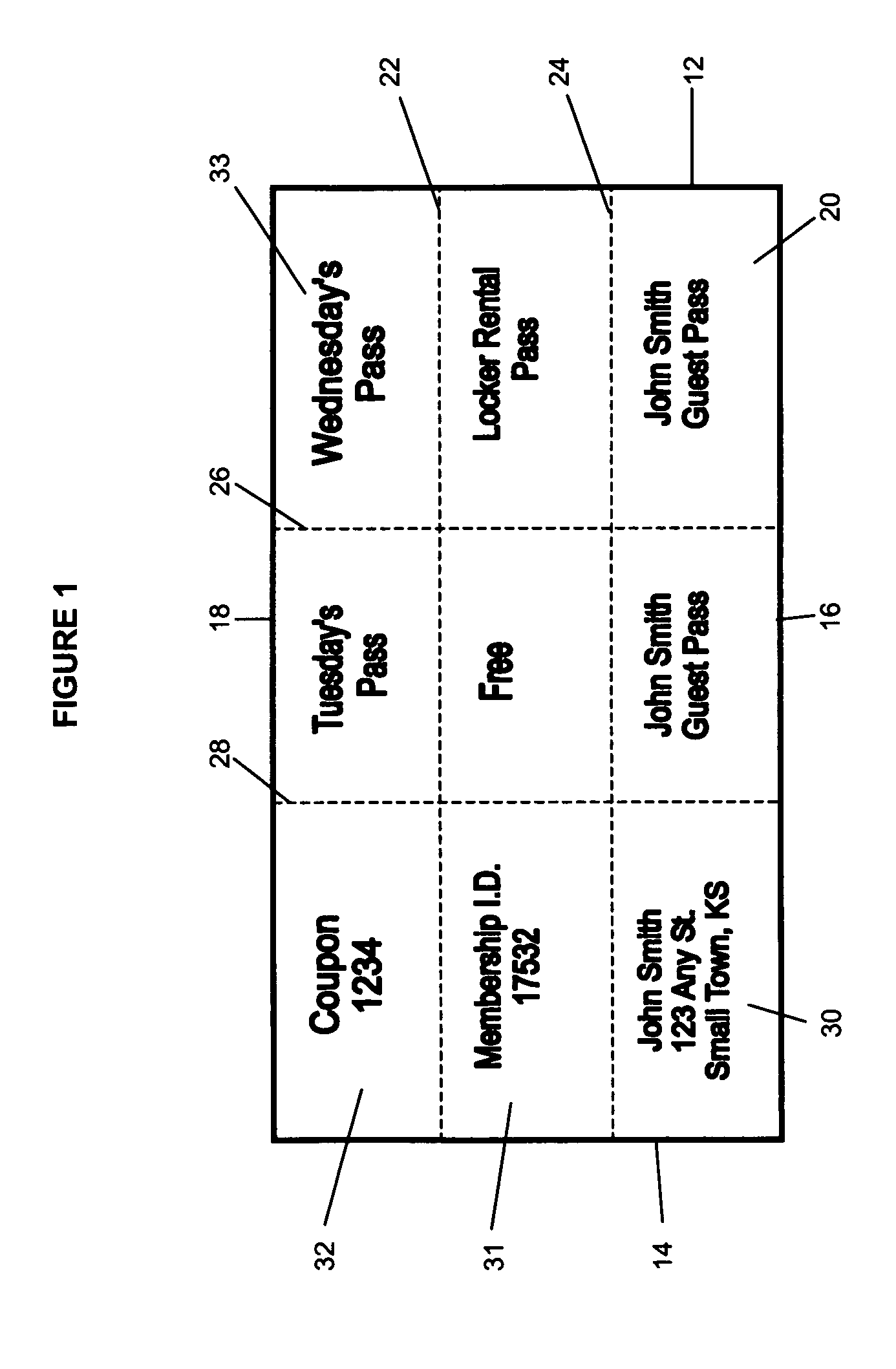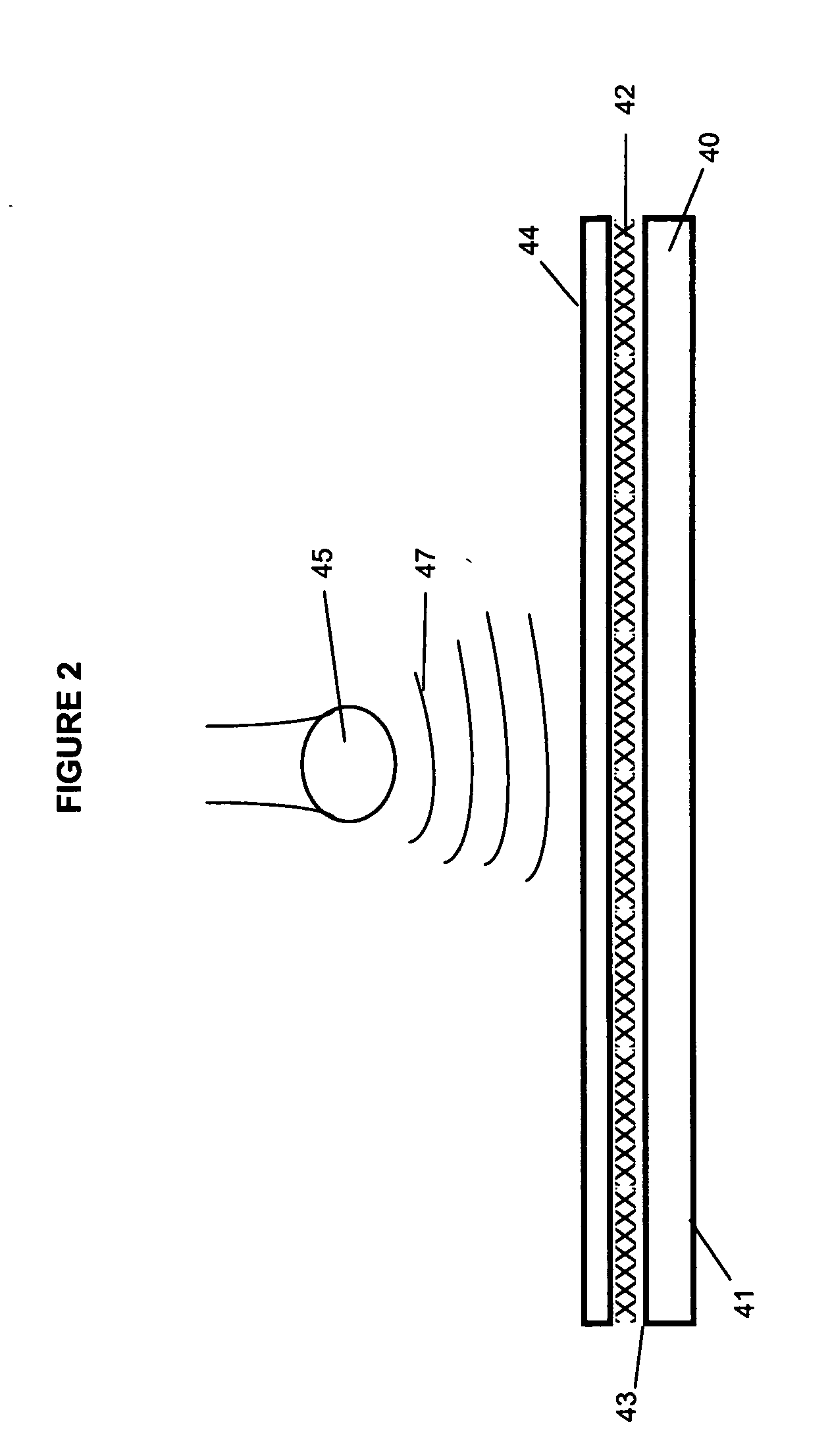Frangible card carrier with removable layer provided in a temporary laminated assembly
a temporary laminated and carrier technology, applied in the direction of printing, other printing matters, etc., can solve the problems of unsatisfactory labels for all applications, unwanted adhesive contact, unwanted tacky substances, etc., and achieve the effect of effective and economical process
- Summary
- Abstract
- Description
- Claims
- Application Information
AI Technical Summary
Benefits of technology
Problems solved by technology
Method used
Image
Examples
Embodiment Construction
[0043] The present invention is now illustrated in greater detail by way of the following detailed description which represents the best presently known mode of carrying out the invention. However, it should be understood that this description is not to be used to limit the present invention, but rather, is provided for the purpose of illustrating the general features of the invention.
[0044] Unexpectedly, it has been discovered, that unique card carrier, intermediate laminate assemblies can be created in-situ in a straight forward and simple process through the use of a coating compound that can be cured in situ. The temporary card carrier laminate described in the present application enables treatment energy, such as ultraviolet energy (“UV”) to be passed directly through one or more of the layers that make up the card carrier assembly and creates the final, temporary laminated arrangement. In addition, and surprisingly it has been found that the strength of the curing compound ca...
PUM
 Login to View More
Login to View More Abstract
Description
Claims
Application Information
 Login to View More
Login to View More - R&D
- Intellectual Property
- Life Sciences
- Materials
- Tech Scout
- Unparalleled Data Quality
- Higher Quality Content
- 60% Fewer Hallucinations
Browse by: Latest US Patents, China's latest patents, Technical Efficacy Thesaurus, Application Domain, Technology Topic, Popular Technical Reports.
© 2025 PatSnap. All rights reserved.Legal|Privacy policy|Modern Slavery Act Transparency Statement|Sitemap|About US| Contact US: help@patsnap.com



